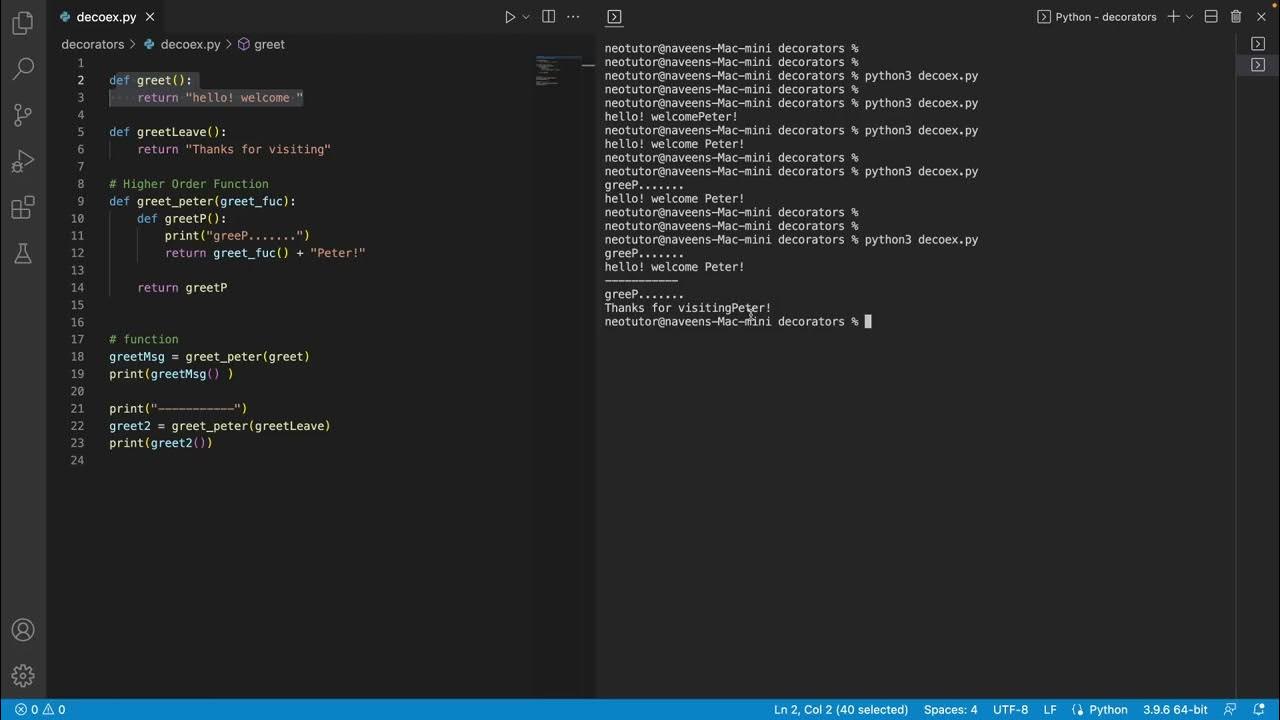5 Essential Uses for Python Decorators

Python decorators are a powerful feature that can significantly enhance the functionality of existing code without changing its structure. Often used to modify or enhance functions, methods, or classes, decorators provide a clean way to handle cross-cutting concerns like logging, access control, and performance monitoring. Here are five essential uses for Python decorators that can transform the way you write and maintain your code.
1. Logging

Logging is crucial for debugging and monitoring applications. Python decorators can seamlessly integrate logging into functions:
import logginglogging.basicConfig(level=logging.INFO)
def log_decorator(func): def wrapper(*args, kwargs): logging.info(f”Calling function {func.name}“) result = func(*args, kwargs) logging.info(f”Function {func.name} completed”) return result return wrapper
@log_decorator def add(a, b): return a + b
add(1, 2)
📝 Note: This decorator logs the entry and exit of the function, providing visibility into the function's lifecycle without altering its code.
2. Timing and Performance Monitoring

Measuring execution time can be invaluable for performance optimization. Here’s how you can use decorators for this purpose:
import timedef time_decorator(func): def wrapper(*args, kwargs): start_time = time.time() result = func(*args, kwargs) end_time = time.time() print(f”Function {func.name} took {end_time - start_time} seconds”) return result return wrapper
@time_decorator def slow_function(): time.sleep(1) return “I slept for 1 second.”
slow_function()
3. Access Control

Decorators can enforce security by controlling access to functions:
def require_admin(func): def wrapper(*args, kwargs): if not args[0].is_admin: # Assuming the first argument is the user instance raise PermissionError(“User not admin”) return func(*args, kwargs) return wrapperclass User: def init(self, is_admin=False): self.is_admin = is_admin
@require_admin def delete_user(user, user_id): return f”Deleting user {user_id}”
user = User(is_admin=False) try: delete_user(user, 1) except PermissionError as e: print(e)
4. Caching (Memoization)

To improve performance by avoiding redundant computations, you can use caching with decorators:
def memoize(func): cache = {} def memoized_func(*args): if args in cache: return cache[args] result = func(*args) cache[args] = result return result return memoized_func@memoize def fibonacci(n): if n < 2: return n return fibonacci(n-1) + fibonacci(n-2)
print(fibonacci(10))
💡 Note: This simple caching mechanism stores results for function calls with identical arguments, reducing computation time for recursive or repetitive operations.
5. Parameter Validation

Before executing a function, you might want to validate its parameters:
from functools import wrapsdef validate_int(func): @wraps(func) def wrapper(value): if not isinstance(value, int): raise ValueError(f”Argument must be an integer, got {type(value)} instead”) return func(value) return wrapper
@validate_int def square_root(value): return value ** 0.5
try: square_root(4) square_root(“4”) except ValueError as e: print(e)
Wrapping up, Python decorators provide a modular approach to extend and modify behavior in your Python code. They are not only about adding new functionalities but also about enhancing the clarity and structure of your code. Whether you're logging, timing functions, enforcing access control, caching, or validating parameters, decorators offer a clean and elegant way to achieve these tasks:
What exactly does a decorator do?

+
A decorator in Python is a function that takes another function as an argument, adds some functionality to it, and then returns it. This allows for code reuse and separation of concerns.
Can decorators cause performance issues?

+
If not implemented properly, decorators might add some overhead. However, good practices like memoization or using efficient algorithms can mitigate this.
How do I chain multiple decorators?

+
Decorators are applied from bottom to top or right to left. This means the order in which you stack decorators can affect how they interact with each other.



